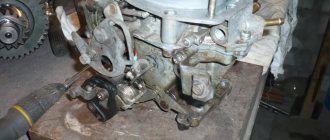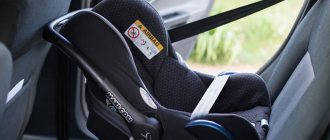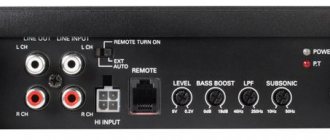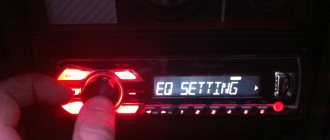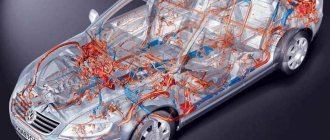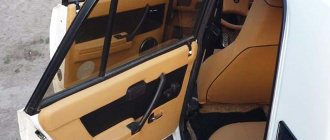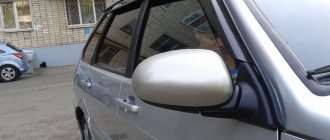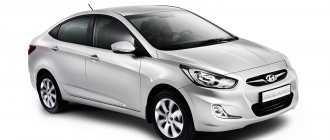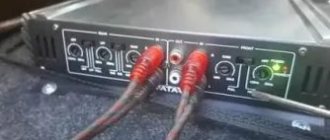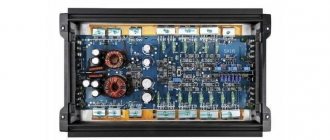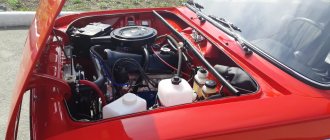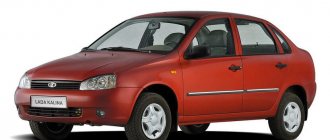The standard equipment of any passenger vehicle includes rear and side view mirrors. These elements are necessary to ensure traffic safety. In a driving school, all cadets are first taught to use similar design elements when changing lanes, overtaking, parking, and moving backwards. In this case, the correct setting and adjustment of the mirrors is of particular importance. The driver’s main task is to ensure good visibility and eliminate or minimize blind spots.
Flat and spherical mirror surfaces can be installed on domestic and imported cars. Models of the first type reliably display the image from the rear and sides of the car. Spherical mirrors provide greater visibility, but at the same time they distort the image and move it away. This must be taken into account when setting up.
Another point is the presence of a mechanical or electric adjustment drive. If on Kalina, many other domestic cars you need to use a lever, in most foreign cars buttons are used for adjustment.
How to adjust the left mirror
Before adjusting the left mirror, you need to take a seat in the driver's seat and adjust the seat position, backrest angle, and steering column. After this, you need to look into the reflection and make the correct adjustments in the following order:
- when deviating to the left, it is necessary to ensure that the rear wing of the car is completely visible;
- the next stage is to take the starting position in the chair. The mirror should reflect no more than 5-7 percent of the body element;
- if there are discrepancies from the required parameters, the adjustment is repeated;
- Adjustment in the vertical plane is made in the same way. The best option is to reflect the sky and earth in a ratio of 40% to 60%.
After the driver manages to adjust and fix the position of the reflective elements on the left side of the car, he can proceed to the settings of the second side mirror.
Important nuances
Let's start with him. They serve to provide the motorist with a panoramic view while in the driver's seat. Moreover, this is true for cars with left and right-hand drive. Only the recommendations should be applied slightly differently.
If you have a left-hand drive, follow these instructions very carefully. If the car is right-hand drive, then the advice on the left side mirror is applied based on the right mirror. And vice versa. I think you've got this point figured out. But in general, right-hand drive cars are a separate topic for discussion, since they are not adapted to our traffic regulations. Too many problems arise. Especially when trying to overtake another car. But let's leave these conversations for another thematic material.
First, keep in mind that cars can be equipped with 2 types of mirrors. Moreover, they can use an electric drive or a mechanical type of drive, where a special lever or joystick is responsible for the settings. Here you need to work manually. I think each of you will understand, using your own car as an example, what to press and where.
Electric ones are more convenient, but are not found on all cars. But everywhere there is the possibility of adjusting the position.
When operating a car, consider what type of mirror is located on the sides of the car.
- With a spherical surface. Their characteristic feature is the ability to distance objects. That is, they create the impression that the car is further away from you than it actually is. It creates a deceptive effect, distorting the reality of what is happening. Not the best option. And if you have similar mirrors on your Polo or other car, many advise replacing them;
- With flat glass surface. Such designs are the most optimal for learning to look and adjust mirrors without distorting reality. They are considered the most suitable for car use, since they can cover the entire road.
Having decided on these questions, you can proceed directly to the settings.
How to adjust the right mirror
In the photo on the Internet you can get visual information on how to properly adjust the mirrors in your car. The procedure is not complicated, but it is necessary to check the position of the reflective elements regularly, preferably before each trip. The right side mirror is also adjusted within a minute using the following algorithm:
- the driver leans to the right to a level where his eyes are in the center of the longitudinal axis of the vehicle;
- adjustment is made in the horizontal plane until the entire rear wing is completely visible in the reflection;
- after returning to its normal position, the structural element of the body should be visible by 5-7 percent;
- Vertical adjustment is carried out until the reflection of the sky and ground is 30% to 70%.
By adjusting the side mirrors according to the above algorithms, the driver will feel more confident when driving and overtaking. This approach allows you to minimize the size of the blind spots on the sides of the car.
How many reflectors are there in the car?
Regardless of the model of the vehicle (its model, status, class, etc.), they all have at least three reflective surfaces:
- side reflectors (there are two of them - left and right);
- salon reflector.
Thanks to their correct alignment, a complete picture of what is happening behind the machine is created. However, one thing worth considering is that the area closest to the vehicle will still remain uncontrolled.
How to adjust the rearview mirror
After purchasing a car, you need to pay attention to the rear view mirror. If a spherical model is installed, it is advisable to replace it with a flat one. A distorted reflection makes driving more difficult, as objects are visually removed.
The question of how to adjust the rear view mirror is solved in the following order:
- first of all, the driver must take his usual position in the seat, adjust the position and tilt of the seat;
- The car glass should be completely visible in the rear view mirror. It is necessary to ensure that the ceiling and seat are reflected in minimal proportions;
- the rotation is adjusted until the driver sees the tip of his ear or the edge of his face;
- If the right side of the headrest is visible in the reflection, the adjustment is also successful.
While driving, the driver should not rise or tilt his head to the sides in order to fully assess the situation behind the car. If such actions do not have to be performed, there are no special problems with adjustment.
How to restore rights if lost: choose the quick method
To protect yourself from blind spots and unpleasant consequences, it is recommended to purchase a DVR and also install parking sensors on your car. This is an excellent addition to reduce the risk of accidents and accidental collisions.
Remember that it is impossible to completely get rid of blind spots. Therefore, you should not completely rely on mirrors. Periodically glance around. But I don’t recommend leaning over the seat when backing up. For such purposes, you can install parking sensors. And it's better with a rear view camera.
Proper adjustment of mirrors is the key to your personal safety. As well as the safety of other road users. Therefore, you should not ignore these tips and do what is convenient for you, violating the principles of setting.
Thanks everyone for your attention! Don't forget to subscribe, leave comments and ask questions that interest you!
What is a blind spot
Correctly performed settings significantly increase safety when driving a vehicle. At the same time, such a concept as a “blind spot” remains relevant. Even in the absence of errors in adjustment, the driver cannot see and control some spaces around the car. Typically, blind spots are located at the rear and sides of the vehicle.
When driving, the following areas fall into blind spots:
- space in the front of the car, especially in the presence of massive and large pillars on domestic vehicles and foreign cars;
- part of the space behind the car also falls into the blind spot and is not reflected in the mirror;
- The most dangerous areas are the spaces on the sides of the vehicle that are not visible in the mirrors. Most often, accidents occur during maneuvering, when parallel moving equipment has left the visibility zone.
It is best to identify blind spots before you start using your car. To do this, you need to get behind the wheel and ask an assistant to walk around the vehicle in a circle. In places where a person’s reflection will disappear, these zones are located.
The second method of searching for problematic places in the overview is convenient to use in traffic jams. It is necessary to observe nearby cars, control where they are reflected and where they are not visible. Every vehicle owner needs to clearly understand the location of blind spots and be careful when changing lanes.
Blind spot mirrors
You can increase traffic safety and minimize risks by installing and adjusting blind spot mirrors. There are the following types of such additional elements for cars:
- spherical models have their own body and are compact in size. They are installed in the upper corner of the main mirror farthest from the driver, on the body or glass;
- parabolic varieties distort the distance, while completely reflecting the environment near the car;
- Electrochromic side mirrors protect the driver from the headlights of other cars and react to light radiation.
Most often, spherical models are installed on vehicles. Such devices significantly expand the visible space and reduce the likelihood of accidents.
Types of car mirrors
Cars are equipped with two types: interior and exterior. Some vehicles do not have interior ones, but there will always be side ones.
Depending on the shape of the surface, they can be of three types:
- Flat - on older cars. They do not distort the reflection, but have a small viewing radius. The dead zone here will be huge.
- Spherical - with a slightly convex surface. They are installed on budget modern passenger cars, and most imported vehicles older than 15 years will almost always have them. Such mirrors have a large viewing radius, but visually distance objects located behind them.
- Aspherical, having different surface roundings. Two thirds of it will be spherical, and the farthest third of the area will be strongly curved, they provide the greatest visibility
Aspherical ones can be distinguished by a line, a vertical stripe passing exactly along the border of two different planes. The broken line on the mirror does not indicate the presence of heating and does not tell you when to change lanes. The strip only shows where the border between the two types of surfaces lies.
The advantages and disadvantages can be found in the table.
| Surface type | pros | Minuses |
| Flat | Does not distort the distance to objects | Large blind spot |
| Spherical | Gives a good overview | Visually increases the distance to objects |
| Aspherical | Provides excellent visibility with minimal blind spot | Not available on older vehicles |
How to check if your mirrors are set correctly
The question of how to properly align mirrors is relevant for many car owners. A similar check should be carried out before each trip. The order of operations is as follows:
- take the driver’s seat, sit comfortably, adjust the tilt of the steering column and backrest, and the position of the seat;
- 5-7 percent of the rear wings should be reflected in the left and right side mirrors. The sky-to-ground ratio is 40% to 60% for the left side, 30% to 70% for the right side;
- In the rearview mirror, the entire glass is visible, part of the ear or the edge of the face, a piece of the headrest is reflected.
This setting is the only correct one. If there are any deviations, it is necessary to adjust the position of the reflective elements in accordance with the information above.
Setting up the salon mirror
This element allows you to get a connected display of what is currently happening behind the car, so it needs to be configured extremely correctly:
- We take a comfortable position in the chair.
- We adjust the mirror so that the rear windshield is clearly visible. In this case, the lines (vertical and horizontal) of both elements must coincide.
Some people prefer to increase the view of the mirror in the car's interior (for example, if it is easier for the car owner to look in only one mirror). In this case, a small parabolic round mirror is glued onto the standard reflective element (it can also be installed on the side elements). Then the driver will have access to a wider panorama.
The dangers of incorrectly configured mirrors
Driving with incorrectly positioned mirrors is tantamount to driving a vehicle without these structural elements. The negative consequences of this approach can be:
- a decrease in the overall level of safety, since the driver does not receive reliable information about the actions of other road users;
- high risk of traffic accidents, especially when changing lanes and maneuvering;
- general decrease in movement speed. The driver intuitively drives slower because he does not see the actions of other cars.
Setting up mirrors is a mandatory element of the program when studying at a driving school. At the same time, even experienced drivers will find it useful to refresh their memory. Daily checking of the condition of the reflective elements is mandatory; no more than 5 minutes are spent. Otherwise, driving a vehicle becomes significantly more difficult.
Tips and tricks
- When driving a car, the mirrors should be adjusted so that a slight turn of the head or shift of the gaze is enough to control the situation on the road.
At the same time, you can look in the side mirrors or rearview mirror only if the driver is convinced of complete safety ahead and is sure that a change in the situation will not happen in the next 1-2 seconds. We also recommend reading the article on how to connect a subwoofer to a radio. From this article you will learn about the features of connecting a subwoofer to a radio. - It is necessary to constantly monitor the situation using the mirrors, and not just before changing lanes or starting other maneuvers.
Control of the road situation allows you to safely perform emergency and unforeseen maneuvers (sharp lane changes, avoiding obstacles, emergency braking, etc.). It should be remembered that even in correctly configured mirrors, “dead” zones are still present. For this reason, it is recommended to take a quick glance over your shoulder during active maneuvers, especially when changing lanes from the left lane to the right lane. By the way, a slight tilt of the body towards the steering wheel allows you to increase the viewing angle. - Also, various troubles can be avoided by visually assessing the situation through the rear window when reversing or during turns. In other words, in addition to orienting by mirrors, in this case you can also turn your head and further assess the situation.
